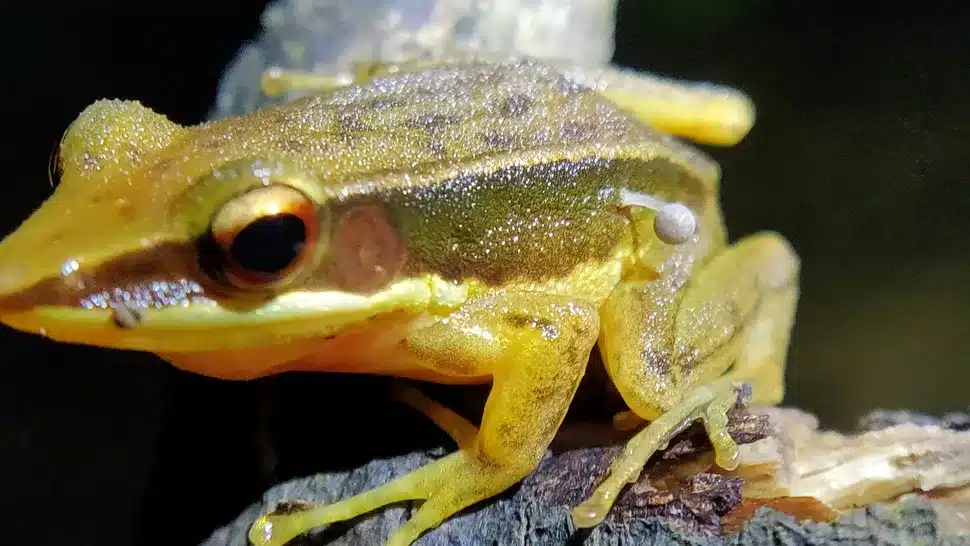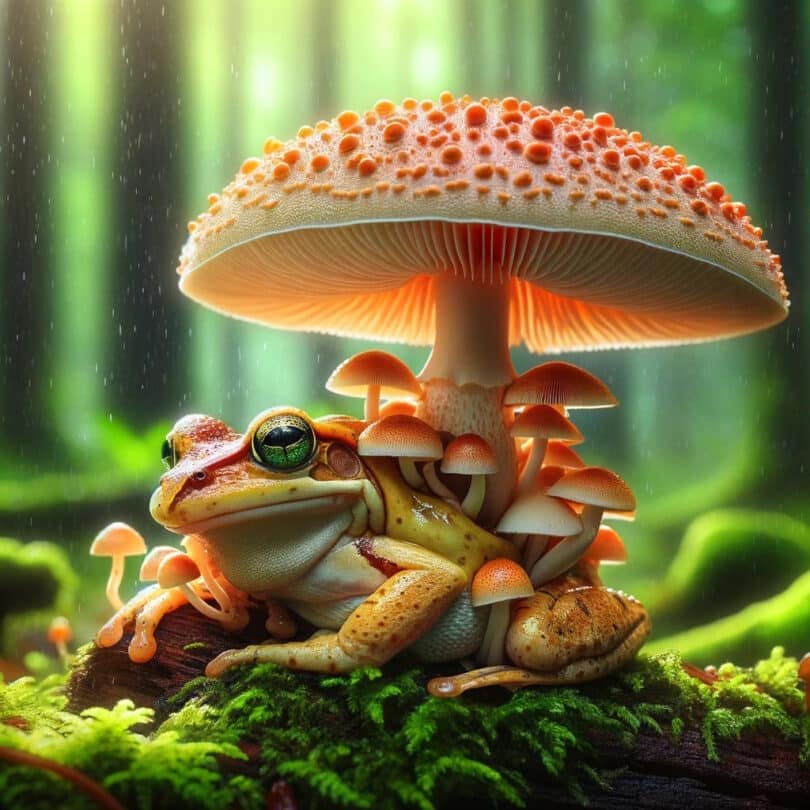Scientists in India discovered a live frog with a mushroom growing from its skin, a phenomenon never documented before. The frog, identified as Rao’s intermediate golden-backed frog, was found among others in the Kudremukh ranges, with a Mycena genus mushroom protruding from its flank.

In an unprecedented discovery, a live frog was found with a mushroom growing directly from its skin in the Kudremukh ranges of India. This finding, documented by Lohit Y.T. from the World Wildlife Fund (WWF) India and his team, presents a baffling case for scientists. The frog, identified as Rao’s intermediate golden-backed frog (Hylarana intermedia), was observed among 40 others, uniquely marked by a white stalk and gray cap mushroom growing from its left flank. Mycologists speculate the mushroom belongs to the genus Mycena, known for thriving on decaying organic matter.
The team’s documentation, published in the journal Reptiles and Amphibians, leaves open questions about whether the fungus originated from within the frog’s body or on its skin surface. Some experts suggest the frog might have acquired the fungus through an infection or wound, providing a niche for the fungus to grow. Despite the unusual growth, the frog appeared healthy with no visible injuries, contrasting with known pathogenic fungi like Batrachochytrium dendrobatidis, which causes deadly skin disease in amphibians.
Rao’s intermediate golden-backed frogs, native to the Western Ghats, are small in size and face a new potential threat with this fungal interaction. The Mycena genus, typically found on dead wood, has shown evolutionary adaptability, growing on live plants and now, possibly, amphibians. This discovery raises questions about the ecological interactions between fungi and amphibians and the potential risks of new fungal infections in wildlife.
Why It Matters: This discovery highlights the complexity of ecological interactions and the potential for new biological phenomena. Understanding such unusual fungal growth on live animals could provide insights into fungal behavior, amphibian susceptibility to infections, and broader ecological implications.
Potential Implications: The implications of this discovery extend to conservation efforts, the study of fungal infections, and the understanding of amphibian resilience. Further research could uncover new fungal species capable of interacting with live hosts, potentially altering our approach to wildlife health and ecosystem management.
Source: Live Science










